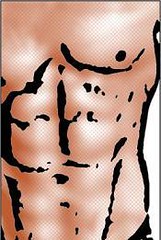 Before Departure
Before Departure- know your environment, both the one your leaving and the one you’re going to (heat, humidity, altitude, weather, time difference).
- know your training schedule on arrival.
- accessibility and type of food available at destination. Generally speaking, you don’t want to change your diet drastically, but you should be eating properly.
- avoid any deep diving 24 hours prior to travel.
During Flight- decrease in oxygen levels are normal on flights, and will not adversely affect healthy individuals.
- dysbarism (expansion of gases trapped in body cavities). In the ear can be relieved by valsalva maneuver, yawning or chewing gum. Better to do this often as can occasionally become severely painful (especially if you have a cold).
- typically there is a 10% drop in humidity, which can be quite noticeable.(especially if you are already somewhat dehydrated, or for those wearing contacts).
- drink fluids, avoid alcohol or caffeine (diuretics).
- motion sickness tablets (such as gravol) may be helpful for those that do not fare well with turbulence, although they may make you drowsy for several hours
- always try to adjust to the upcoming time zone.
- tighten the core muscles (namely transversus abdominus, pelvic floor, multifidus) and gluteal muscles periodically to prevent back problems.
- stretch problem areas, which may include hip flexors, groin and hamstrings (carefully if you’ve been sitting for a long time).
- During your waking hours, get up and move as often as possible, at least every hour.
Circadian Dysrhythmia (Jet Lag)
- Continue to adjust to the upcoming time zone, including setting your watch to the new time zone as early as possible.
- Eat light meals, possibly more frequently but again, try to get on the new schedule.
- Sit in the aisle seat to facilitate getting up when you need to be awake.
- When you should be awake, try to be in the light (especially sunlight, as your body responds to this quite well).
- Conversely, when you need to sleep, try to be in the dark.
On Arrival- train light for a few days.
- try to get into the sunlight in the mornings, to help your body’s internal clock adjust quicker.
- Try to train at the time of day of the actual event.
- Do not neglect nutrition and proper hydration.
The jury is still out on the effectiveness and safety of taking supplemental melatonin to combat jet lag. Melatonin is naturally created by the body to adjust the internal clock, and will be released by using some of the jet lag tips I mentioned above.
Harry




